Getting into houseplants can be a dangerous hobby because once you add one indoor plant to your collection, you’ll probably want to pick up a bunch more! Indoor plants can improve indoor air quality, add color to drab home decor, and they’re fun to keep as well. But if you don’t want to keep buying new plants to add to your collection, there is another option: plant propagation.
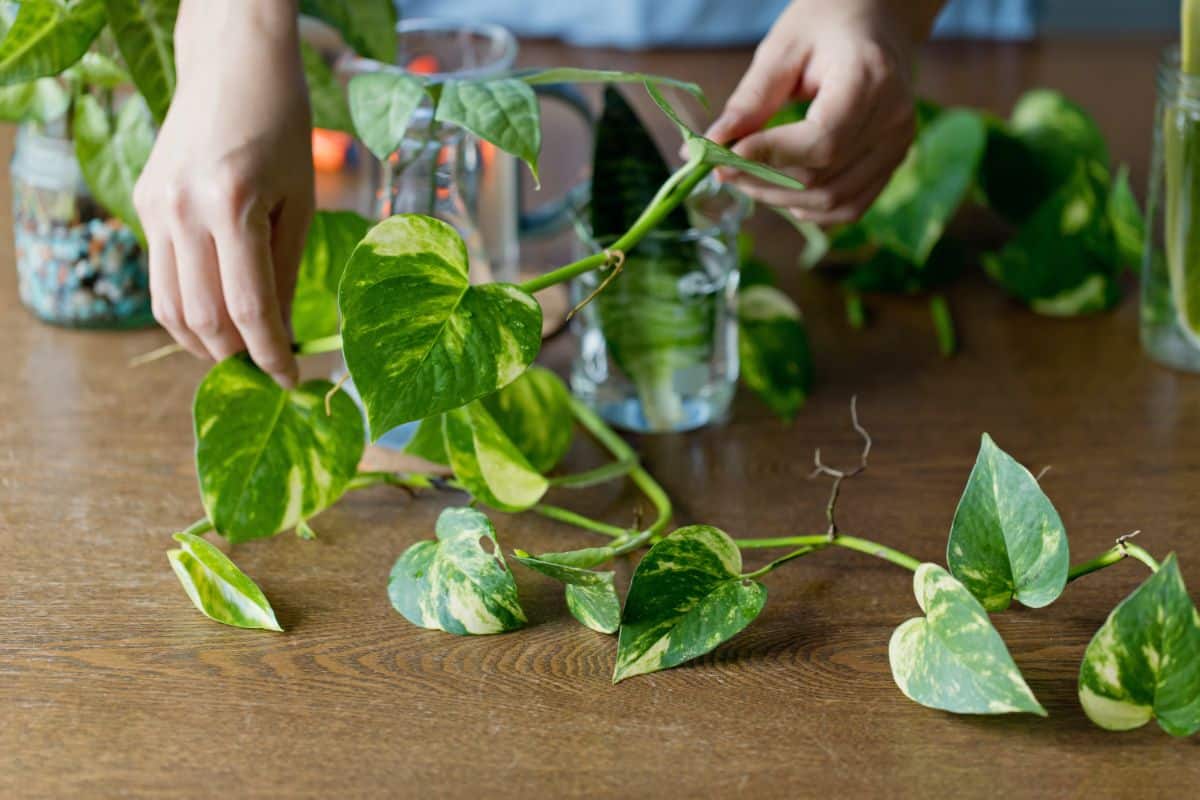
Many houseplants can be propagated to create new (and free!) plants for your home. However, some plants need to be propagated with soil, root division, or rooting hormones, which can be a bit more complicated. If you’re just starting out with propagating plants, an easier technique is water propagation, which happens to work well with many of the most common houseplants on the market.
In the list below, you’ll find the best low-maintenance indoor plants that can be easily propagated with just a vase or a jar and a bit of water. Adding a propagation station to your houseplant shelves or kitchen windowsill can allow you to make tons of new plants to add to your home, to give as gifts, or to share with friends. Read on to find the best beginner-friendly plants to propagate in water right here!
Jump to:
- 20 houseplants to propagate in a jar of water
- 1. Pothos (Epipremnum aureum)
- 2. Philodendron (Philodendron spp.)
- 3. Inch plant (Tradescantia zebrina)
- 4. Prayer plant (Maranta leuconeura)
- 5. Spider plant (Chlorophytum comosum)
- 6. Chinese evergreen (Aglaonema modestum)
- 7. Peace lily (Spathiphyllum wallisii)
- 8. Begonia (Begonia spp.)
- 9. Basil (Ocimum basilicum)
- 10. African violet (Saintpaulia Ionantha)
- 11. Mint (Mentha spp.)
- 12. Coleus (Solenostemon scutellarioides)
- 13. Christmas cactus (Schlumbergera bridgesii)
- 14. Lucky bamboo (Dracaena sanderiana)
- 15. Fiddle leaf fig (Ficus lyrata)
- 16. Monstera (Monstera spp.)
- 17. Chinese money plant (Pilea peperomioides)
- 18. Arrowhead vine (Syngonium podophyllum)
- 19. Velvet plant (Gynura aurantiaca)
- 20. Jade plant (Crassula ovata)
- Summary
20 houseplants to propagate in a jar of water
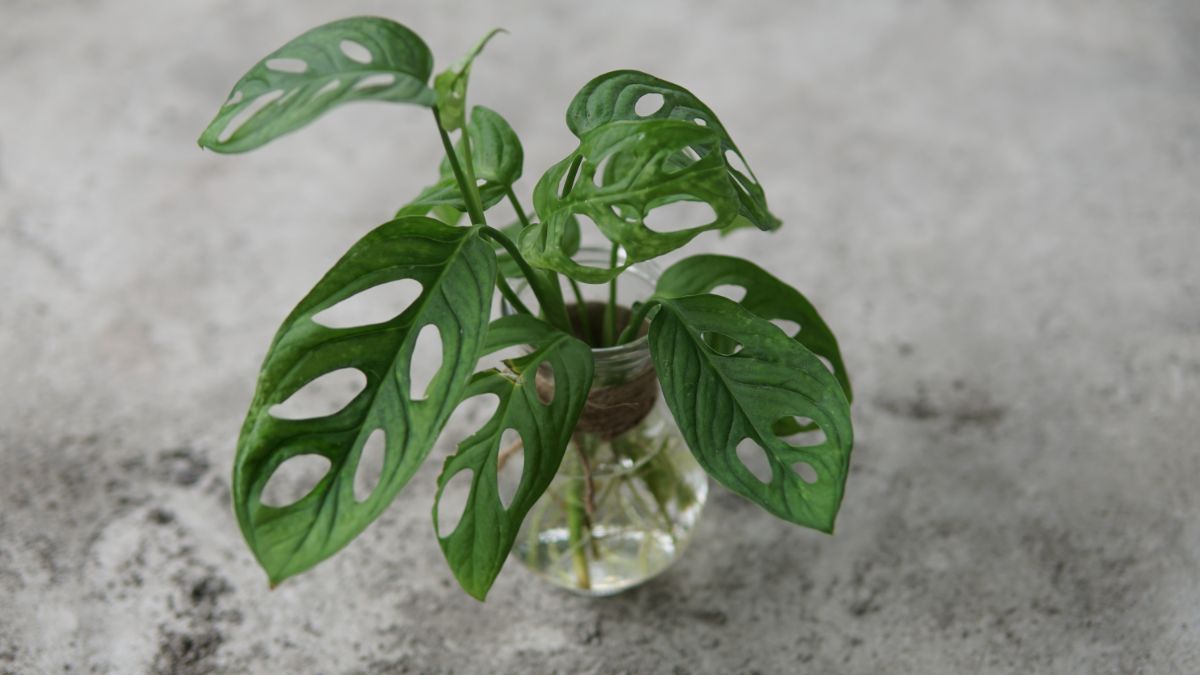
Propagating houseplants in water doesn’t take a lot of work. Just make a clean, sharp, slightly angled cut on your plant’s stem at a leaf node and then submerge the cut stem in water for a few days or weeks. Refresh the water every few days to prevent bacteria buildup, and your plant cuttings should begin developing new roots in no time at all!
1. Pothos (Epipremnum aureum)
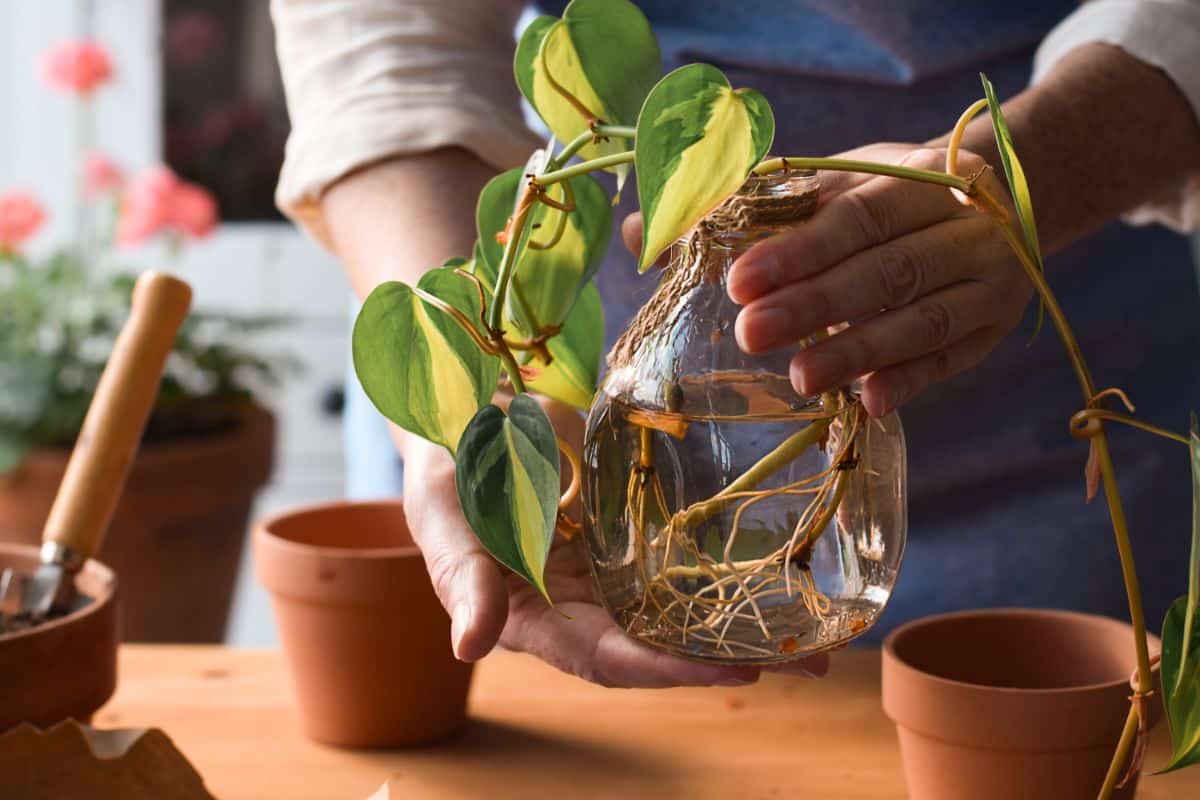
| Plant name: | Pothos |
| Light requirements: | Bright, indirect light to low light |
| Approximate days to root? | 7 to 14 days |
| Toxic to pets? | Yes |
Also known as devil’s ivy, pothos is one of the most indestructible and beginner-friendly plants around, so it’s no surprise that it’s also a top plant for home propagation. These vining plants can thrive in low-light homes, and while they grow best in soil, pothos is so easygoing that it can also live indefinitely in vases of water. What’s more, pothos plants come in many different varieties, and many houseplant parents keep an array of different types of pothos together to enjoy their uniquely colored leaves.
Some of the most popular types of pothos include the ‘Neon’ pothos, ‘Marble Queen’ pothos, and ‘Golden’ pothos. Regardless of what pothos variety you choose to keep, these plants root readily when placed in a vase of water. If you want a fuller-looking pothos plant, plant a handful of rooted pothos cuttings together in a single pot and allow the vines to take over!
2. Philodendron (Philodendron spp.)

| Plant name: | Philodendron |
| Light requirements: | Bright, indirect light |
| Approximate days to root? | 2 to 3 weeks |
| Toxic to pets? | Yes |
The philodendron plant family is a large one, and it includes over 450 varieties of plants. Some philodendrons have a more upright growth habit, while other philodendrons grow as vines. You can experiment with rooting different philodendron varieties in water; however, you’ll usually have the best luck with vining species.
Some of the best philodendrons for propagating in a vase of water include the ‘Velvet Leaf’ philodendron and the ‘Heart Leaf’ philodendron. These philodendrons have a similar appearance and growing requirements to pothos, and they’re fast to root in water. After rooting, pot up several philodendron vines together in a pot or hanging basket and allow the plants to naturally trail and cascade over the pot’s rim.
3. Inch plant (Tradescantia zebrina)

| Plant name: | Inch plant |
| Light requirements: | Bright, indirect light |
| Approximate days to root? | 1 to 2 weeks |
| Toxic to pets? | Yes |
You may be sensing a theme at this point: vining plants tend to be some of the simplest plants to root in water, and inch plants are no exception! Also known as the wandering dude, inch plants are no-nonsense houseplants that are mostly prized for their colorful, striped leaves. You can find both purple and green inch plant varieties, but both types often have a silvery sheen to their leaves that is quite unique.
As trailing plants, inch plants look stately in hanging baskets, and they naturally form a mounding, rounded silhouette over time. To propagate inch plants, simply snip the succulent stem beneath a leaf node and then cut away the lowermost leaves so they don’t sit in water. Then, place the cut stem in water until it roots, freshening up the water as needed so it never gets cloudy.
4. Prayer plant (Maranta leuconeura)
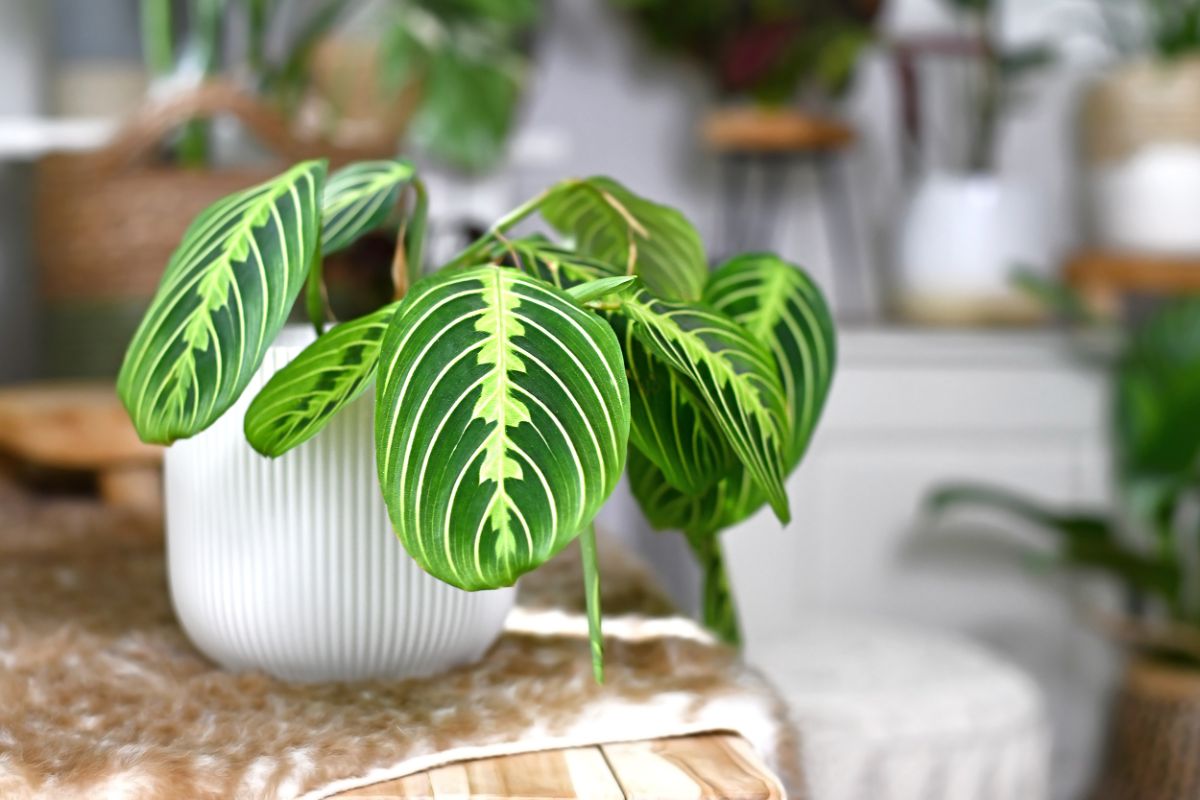
| Plant name: | Prayer plant |
| Light requirements: | Bright, indirect light to medium light |
| Approximate days to root? | 3 to 4 weeks |
| Toxic to pets? | No |
Prayer plants are famed for their colorful leaves that slightly resemble the vivid and patterned carapaces of tropical beetles. But beyond their flashy foliage, prayer plants are noteworthy for their curious habit of moving! That’s right, prayer plant actually move with the sun and turn upwards in the evening as if they’re in “prayer.”
Prayer plants’ moving leaves are an evolutionary adaptation intended to help the plant conserve water. However, while this water conservation technique does work, prayer plants will grow best if you water them regularly and keep them near a humidifier or on a pebble tray. Like the other plants on this list, prayer plants are easy to root in water, and you can expand your plant collection quickly by propagating new prayer plants from cuttings.
5. Spider plant (Chlorophytum comosum)
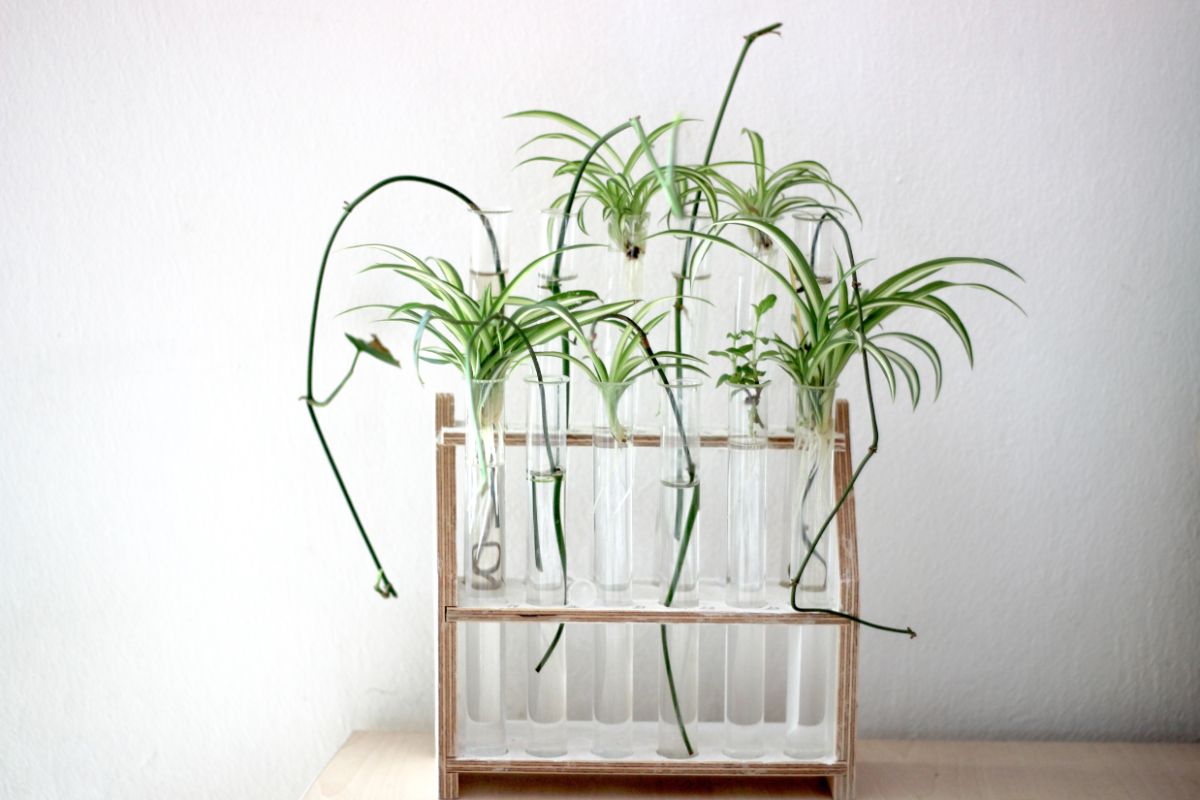
| Plant name: | Spider plant |
| Light requirements: | Bright, indirect light |
| Approximate days to root? | 2 to 4 weeks |
| Toxic to pets? | No |
Spider plants are one of the best plants for propagation since they naturally make their own pups or “spiderettes” as they grow. When spider plants are mature, they produce a long stalk that eventually blossoms into small, white flowers. But once those flowers fade, the plant’s stem begins to sprout new miniature spider plants to add to your collection!
Spider plant pups can be left on the parent plant, or they can be snipped off to create a new plant. After removing spider plant pups from the parent, you can root them in either soil or water. When the new plant has a good amount of new roots growing, pot it up in a rich potting mix and then place your plant in bright, indirect light and water it regularly.
6. Chinese evergreen (Aglaonema modestum)

| Plant name: | Chinese evergreen |
| Light requirements: | Bright, indirect light to low light |
| Approximate days to root? | 1 to 2 weeks |
| Toxic to pets? | Yes |
Chinese evergreens are another beginner-friendly houseplant that can thrive in a range of conditions, including lower-light homes. Despite their name, these tropical plants don’t have needle-shaped foliage; instead, they boast boldly colored, broad leaves that are sure to stand out in any houseplant display. As a slow-growing plant, Chinese evergreens won’t overwhelm your space, and they generally max out at around 1 to 3’ tall.
Like many other plants, Chinese evergreens can be rooted in soil or water, so it’s really up to you. You can take cuttings of these plants deliberately, or if you happen to break a stem off your plant, you can try your hand at rooting it to keep the stems from going to waste. Chinese evergreens typically root best from stem cuttings that are about 4 to 6” in length and have a leaf node at the base.
7. Peace lily (Spathiphyllum wallisii)
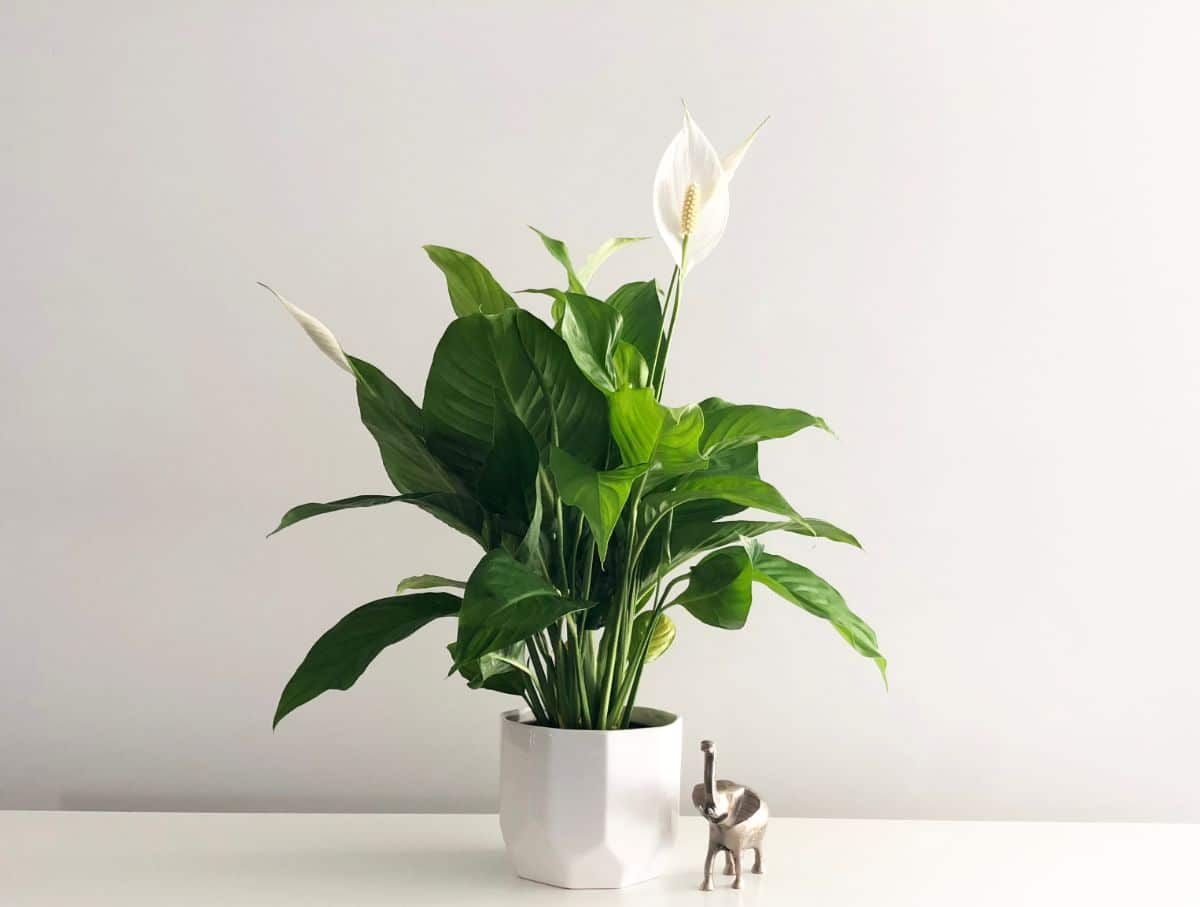
| Plant name: | Peace lily |
| Light requirements: | Bright, indirect light to low light |
| Approximate days to root? | 1 to 2 weeks |
| Toxic to pets? | Yes |
Like Chinese evergreens and pothos, peace lilies are also tolerant of lower-light homes, allowing you to keep these plants in rooms where other houseplants may not thrive. Peace lilies are famous for their glossy green leaves, but they’re even more widely known for their elegant white flowers, which add a touch of class to any home décor. Peace lilies generally bloom in spring, but happy plants may rebloom again in fall if you’re lucky.
Unlike some of the other plants on this list, peace lilies propagate best from root division rather than cuttings. To propagate these plants in water, tease the root ball of an established peace lily apart until you’re left with smaller sections of the plant. Rinse the root ball off, and then place your new peace lily in a vase of water.
While peace lilies can grow in water for years, they often don’t grow as large as peace lilies kept in soil. It’s also important to note that these plants are toxic to cats and dogs, so they’re best avoided if you have a furry friend who likes to get into your plants!
8. Begonia (Begonia spp.)
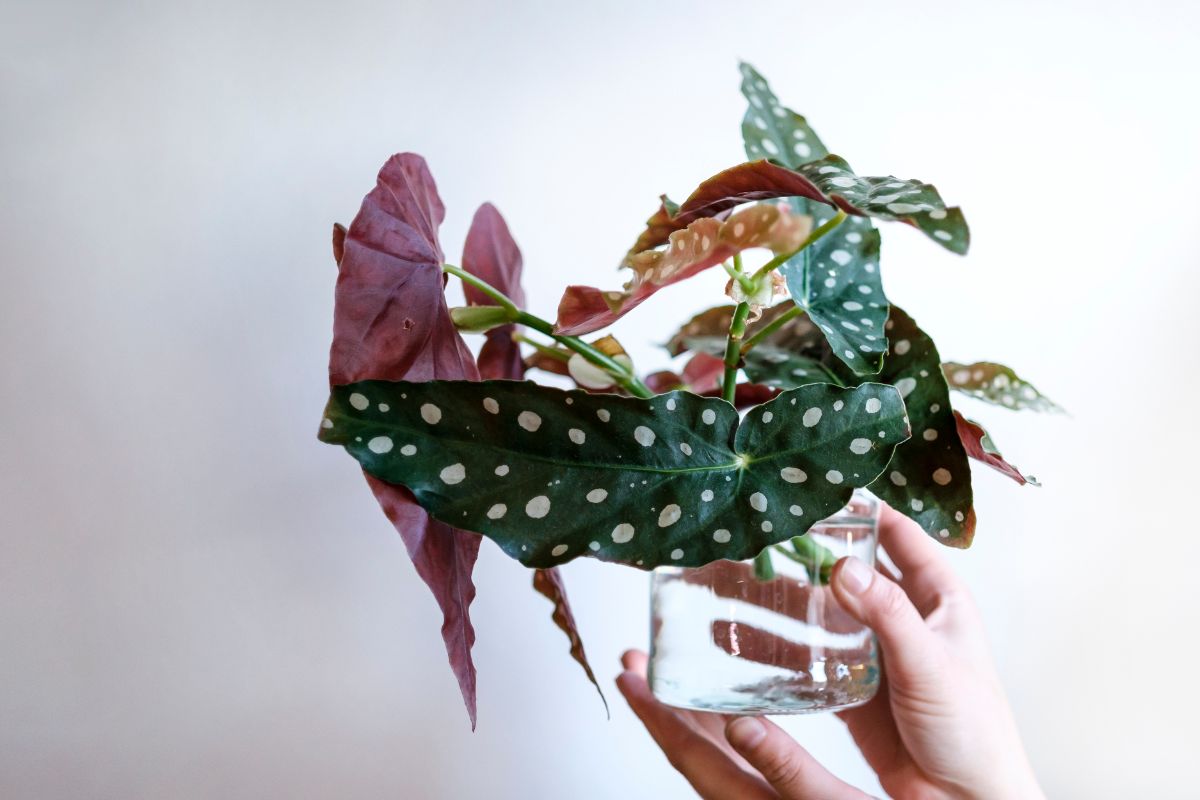
| Plant name: | Begonia |
| Light requirements: | Bright, indirect light |
| Approximate days to root? | 3 to 4 weeks |
| Toxic to pets? | Yes |
Tuberous begonias propagate best from root cuttings, but the other types of begonias generally root well in water. Stem cuttings are ideal for this propagation method, and you should always use a sterilized knife or sharp pair of scissors to take your plant cuttings. When you’re ready to start, make your cuts directly below a leaf node and then snip away the lower leaves on the stem so they won’t be below the water line in your propagation glass.
Cane begonias are particularly satisfying to propagate since their sturdy stems root easily. Make sure that any begonia cutting you try to root has at least a leaf node or two, and make sure the cutting is a few inches long. While begonias commonly flower indoors, these striking plants are also beloved for their colorful leaves, which come in a range of vivid hues and fun patterns, including polka dots!
9. Basil (Ocimum basilicum)
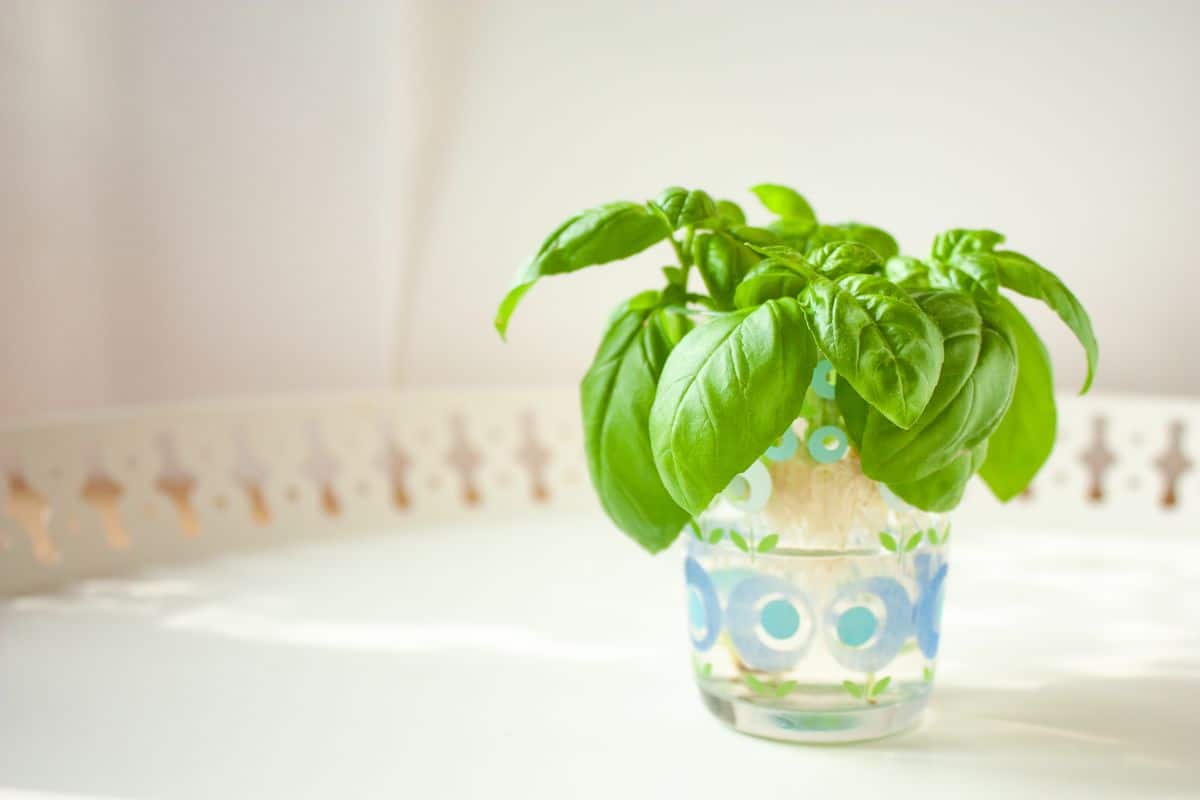
| Plant name: | Basil |
| Light requirements: | Bright light |
| Approximate days to root? | 2 to 4 weeks |
| Toxic to pets? | No |
Basil isn’t usually thought of as a houseplant, but you can easily grow basil indoors and enjoy this delicious herb all year round. A key ingredient in pesto and caprese salads, basil is quick to root in water. Just take a cutting of basil below a leaf node (you can even use fresh herbs from the grocery store!) and submerge the cut end in water until roots develop.
While Genovese basil is the most common type of basil used in pestos, you can also try out other basil varieties, like purple basil and Thai basil. When basil plants are mature, nip off a few leaves at a time to provide your kitchen with all the fresh herbs you need. Pruning basil frequently will encourage the plant to produce new leaves, and it will also keep the plant from flowering.
10. African violet (Saintpaulia Ionantha)
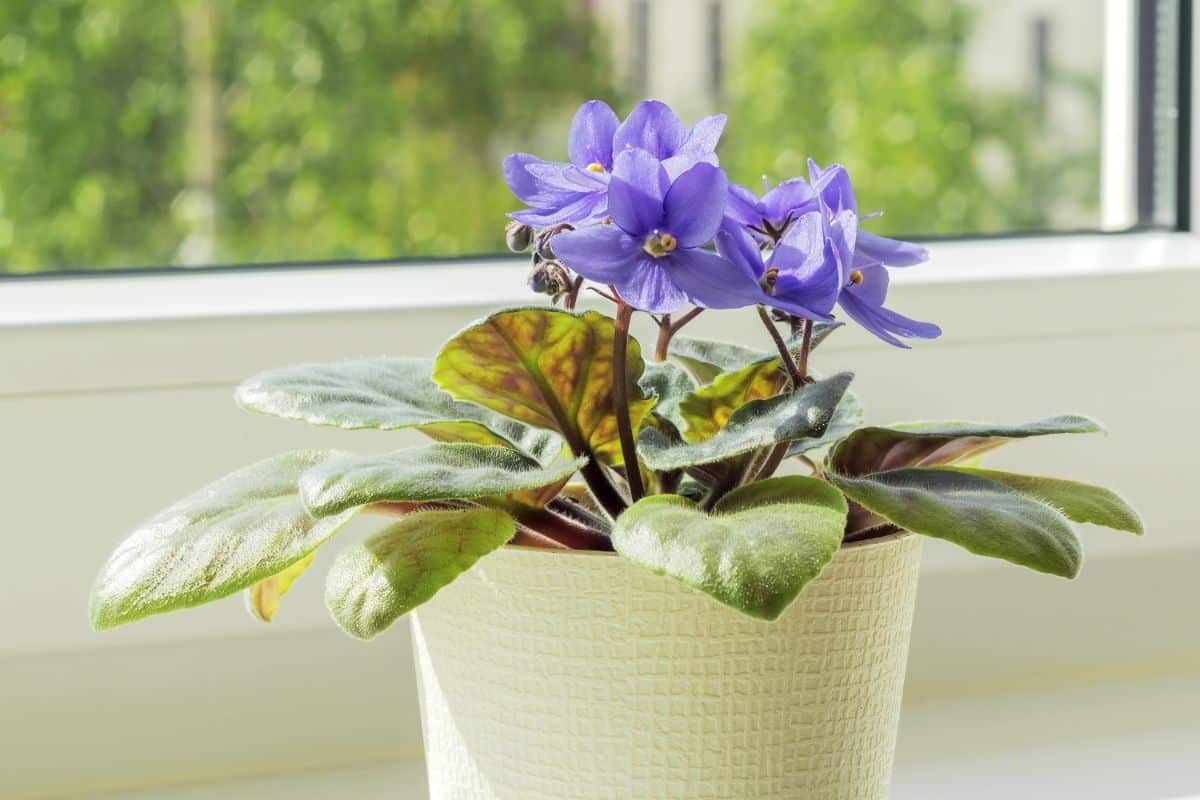
| Plant name: | African violet |
| Light requirements: | Bright, indirect light to medium light |
| Approximate days to root? | 3 to 4 weeks |
| Toxic to pets? | No |
African violets are a super easy plant to root in water, and all you need is a healthy leaf from your mother plant! Select a middle-sized leaf to propagate, as the smallest leaves are usually too immature to root, and the largest leaves are past their prime. Make your cut on the leaf stem at a 45-degree angle to give the stem more space for rooting.
After taking your leaf cutting, place your African violet leaf in a vase of water and wait. Some growers clip off the top section of the leaf to focus the plant’s energy toward root development, but this isn’t necessary. When your new African violet has developed roots, pot your plant up in a small pot with a rich potting mix intended for violets.
11. Mint (Mentha spp.)
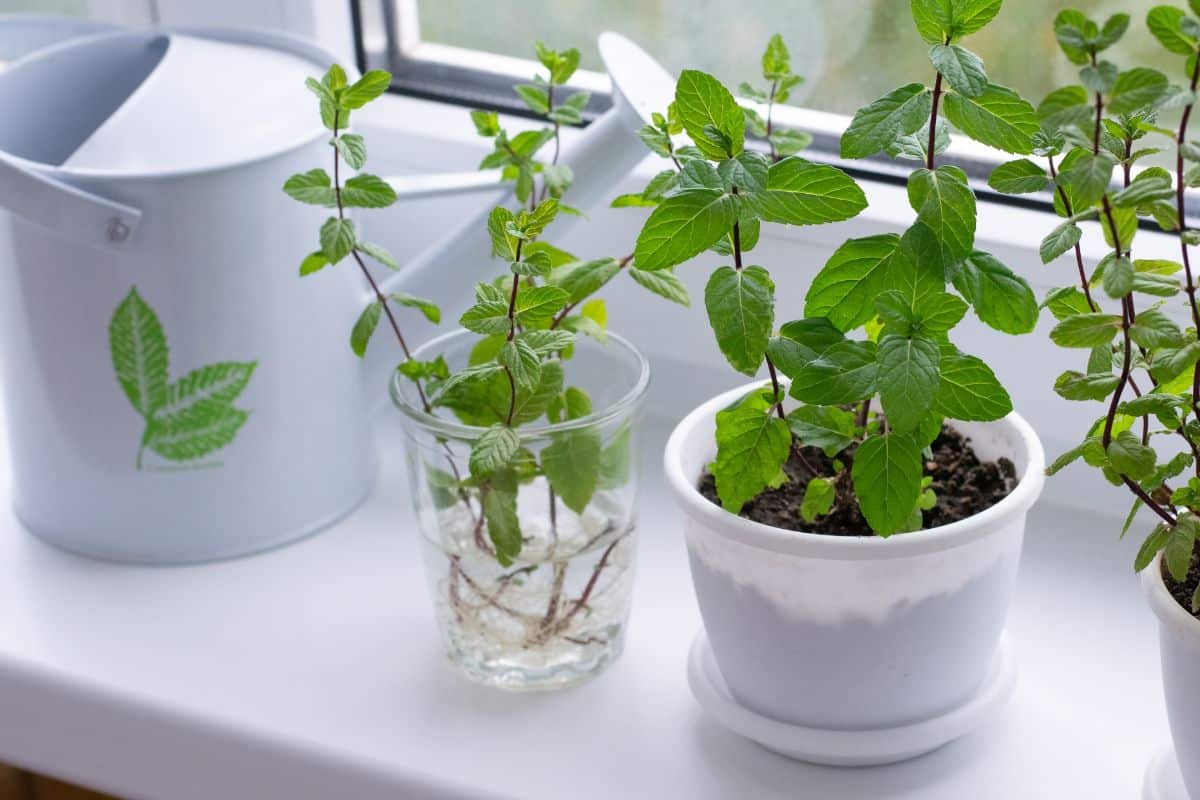
| Plant name: | Mint |
| Light requirements: | Bright light |
| Approximate days to root? | 2 to 3 weeks |
| Toxic to pets? | Yes |
Like basil, mint is mostly thought of as an outdoor plant intended for herb gardens. But mint can grow well indoors just as long as it gets enough bright light. Plus, if you keep mint inside, you won’t need to worry about this vigorous grower taking over your garden!
Keeping mint on your kitchen windowsill is an easy way to always have the freshest herbs on hand for herbal teas, iced teas, and sweet desserts. Depending on your tastes, there are many different mint varieties to choose from, including chocolate mint, apple mint, and the ever-popular peppermint! Mint cuttings are quick to root in water, but you can make the process go even faster by covering up the jar and cuttings with a plastic bag to lock in humidity levels.
12. Coleus (Solenostemon scutellarioides)
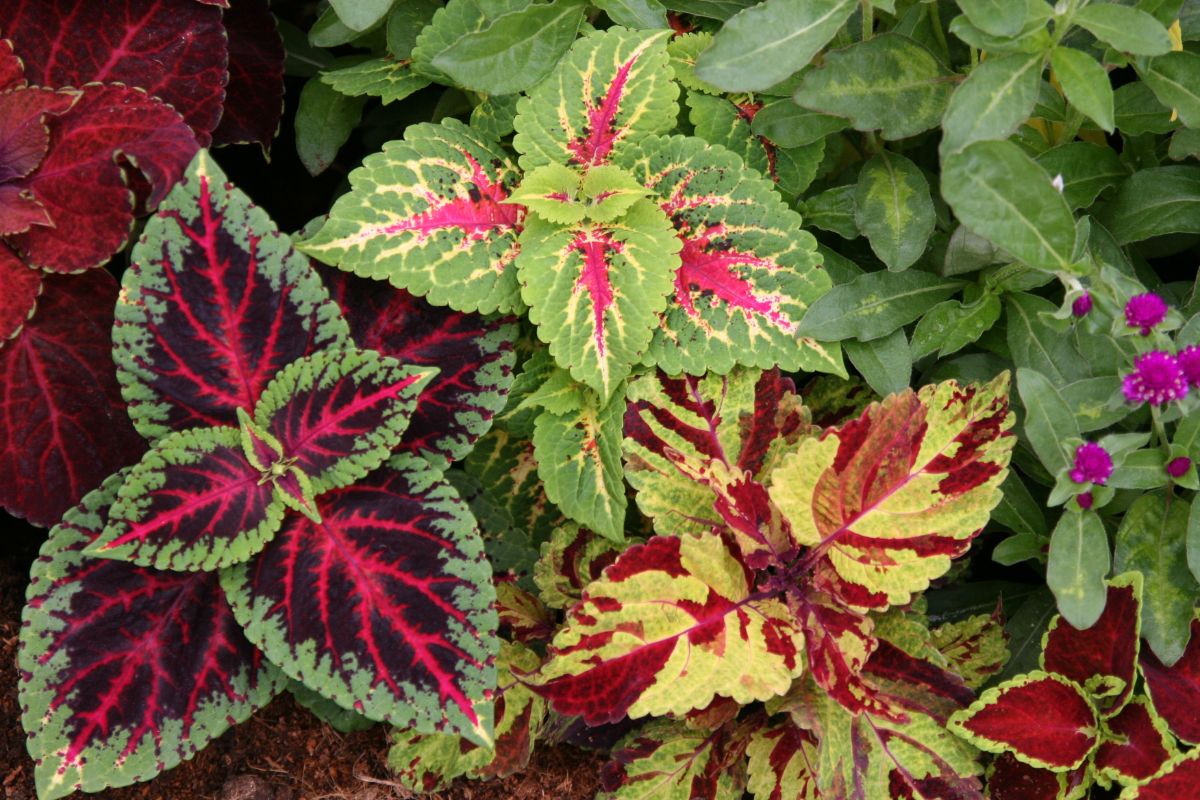
| Plant name: | Coleus |
| Light requirements: | Bright light |
| Approximate days to root? | 3 to 4 weeks |
| Toxic to pets? | Yes |
Coleus is commonly grown in outdoor container gardens, and it’s a must-have in autumn planter displays. But coleus is also a fantastic and colorful houseplant to add to your collection, and its vibrant leaves are some of the showiest you can find! Just keep in mind if you want to grow coleus indoors that this light-loving plant will need lots of bright sun and extra humidity, so you may want to pick up a humidifier.
To root coleus in water, take a section of stem that’s at least a few inches long and has several leaf nodes. Make your cut at an angle right below a leaf node, and then strip away the lowermost leaves on the stem. After taking your cutting, place your coleus starts in bright, indirect light and swap out the water every few days to prevent bacteria from growing in your propagation glass.
13. Christmas cactus (Schlumbergera bridgesii)
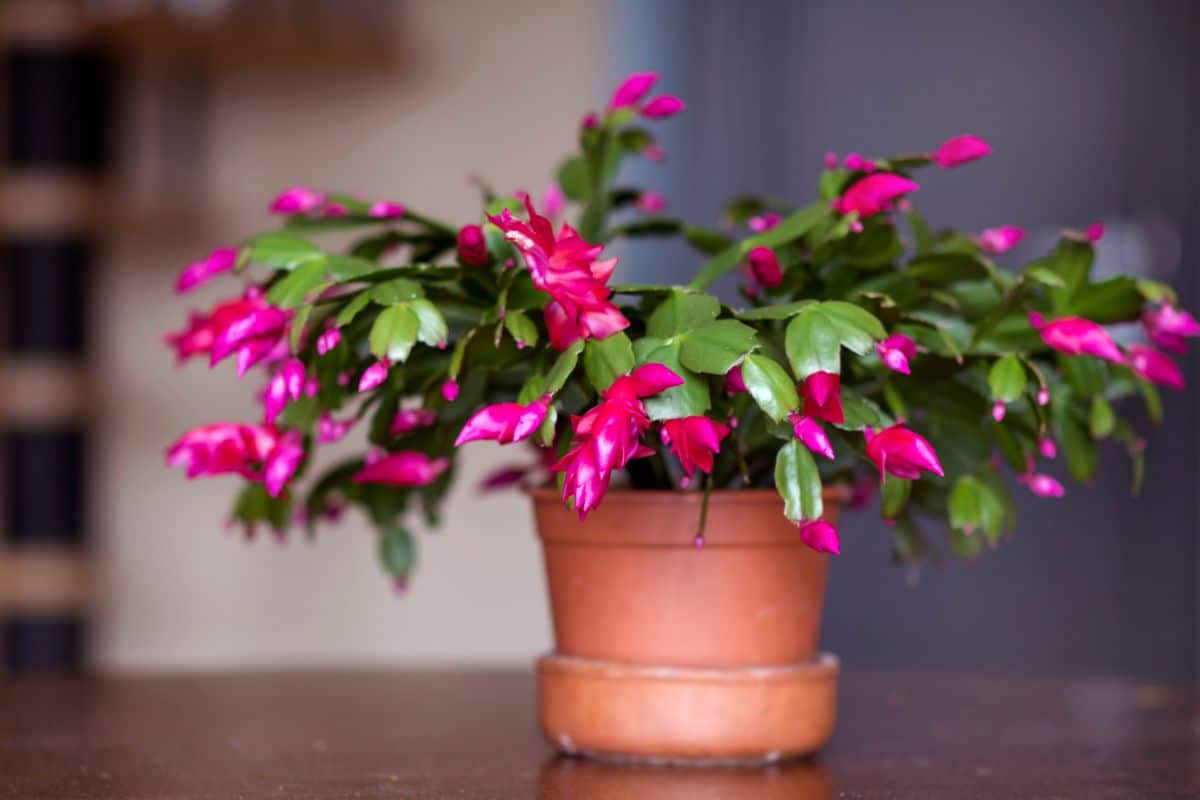
| Plant name: | Christmas cactus |
| Light requirements: | Bright, indirect light |
| Approximate days to root? | 2 to 3 weeks |
| Toxic to pets? | No |
Christmas cactus is an ultra-beginner-friendly plant that can grow well with minimal water. Named for its bloom time, which occurs just around the holidays, the Christmas cactus reliably produces a profusion of tropical-looking flowers that come in shades of pink, red, orange, and white.
To propagate cuttings, take a clipping of Christmas cactus stem that contains at least 2 segments. For faster results, selecting a Y-shaped stem is recommended but not required. Once rooted, Christmas cacti should be potted in well-draining soil suited for cacti and succulents.
14. Lucky bamboo (Dracaena sanderiana)

| Plant name: | Lucky bamboo |
| Light requirements: | Bright, indirect light to low light |
| Approximate days to root? | 4 to 6 weeks |
| Toxic to pets? | Yes |
Lucky bamboo is often used in Feng Shui designs, but it also makes a fabulous and low-maintenance plant for desktops and home offices. This plant is commonly sold in water or soil, so of course, you can root cuttings in water too!
Lucky bamboo takes longer to root in water than some of the other plants on this list, but it will root eventually. After rooting, you can continue to grow your lucky bamboo plants in water, or you can transplant them into the soil.
15. Fiddle leaf fig (Ficus lyrata)
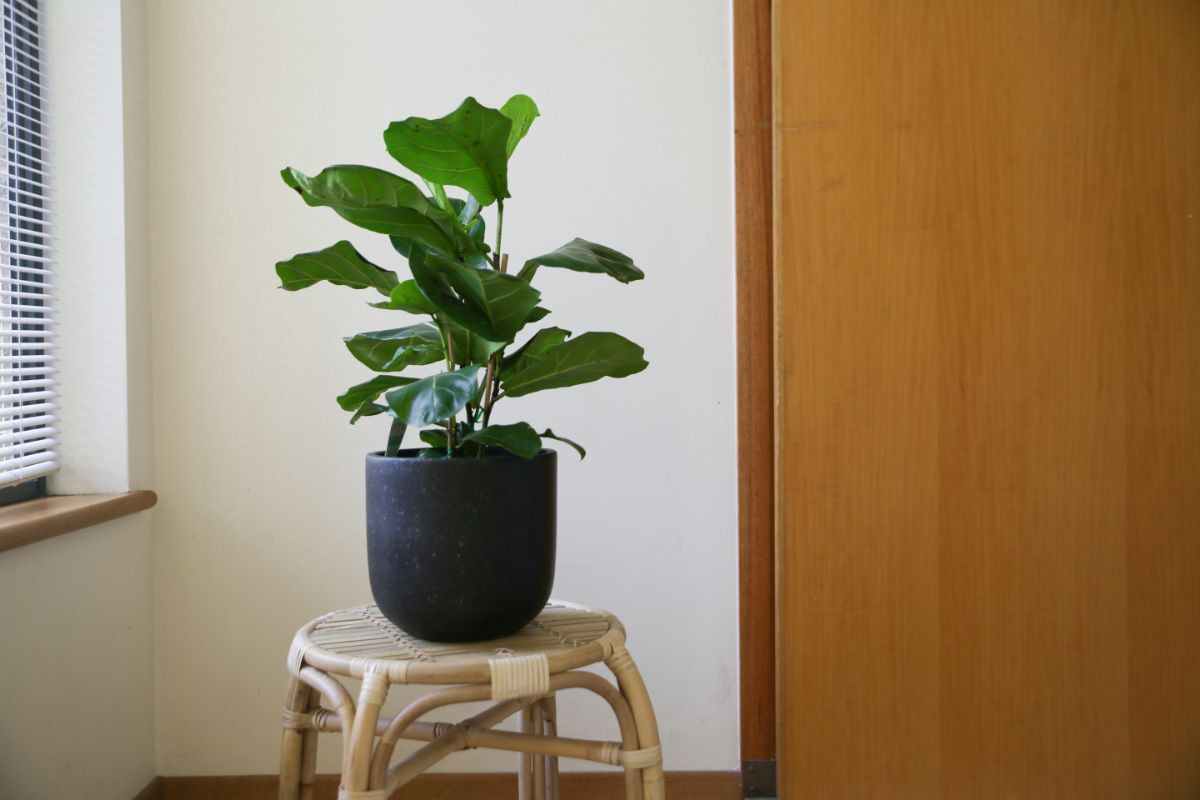
| Plant name: | Fiddle leaf fig |
| Light requirements: | Bright light |
| Approximate days to root? | 3 to 4 weeks |
| Toxic to pets? | Yes |
Fiddle leaf figs are very photogenic plants with distinct fiddle-shaped leaves that are often featured on mugs, t-shirts, and other home goods; however, these plants also make striking ornamental plants for your home. Mature fiddle leaf figs can grow up to 50’ tall in nature, but they usually stop growing at around 10’ tall indoors.
Fiddle leaf figs sometimes need pruning, especially if they get leggy indoors. When you clip away sections of fiddle leaf figs, you can also save the cuttings and root them to produce more plants. Cuttings should have about 2 to 3 leaves, and you’ll want to make your cutting about 3” below the lowermost leaf to get the best results.
16. Monstera (Monstera spp.)

| Plant name: | Monstera |
| Light requirements: | Bright, indirect light |
| Approximate days to root? | 2 to 3 weeks |
| Toxic to pets? | Yes |
Monsteras are another popular plant that’s often emblazoned on clothing, but monsteras are also classic houseplants that grow readily, even in medium light. At times, monstera plants can get a bit overgrown, but that just means it’s time to prune your monstera and propagate the cuttings!
As with other houseplants, you’ll want to take monstera cuttings below a node, and it’s best to take cuttings with very healthy leaves. Once your new monstera has developed roots that are about 3” long, you can pot up your plant in soil and display it with the rest of your houseplant collection.
17. Chinese money plant (Pilea peperomioides)

| Plant name: | Chinese money plant |
| Light requirements: | Bright, indirect light |
| Approximate days to root? | 2 to 3 weeks |
| Toxic to pets? | No |
Also known as UFO plants and friendship plants, Chinese money plants are some of the easiest plants to propagate, and they often develop pups on their own. However, you can also speed things along and get more plants for your collection by propagating these plants in water!
One thing to keep in mind with Chinese money plants is that these plants have higher calcium needs than many other houseplants, and they can develop warped leaves if they don’t get enough of this nutrient. To maintain the look of your plant, be sure to provide your Chinese money plants with a fertilizer that contains plenty of calcium.
18. Arrowhead vine (Syngonium podophyllum)
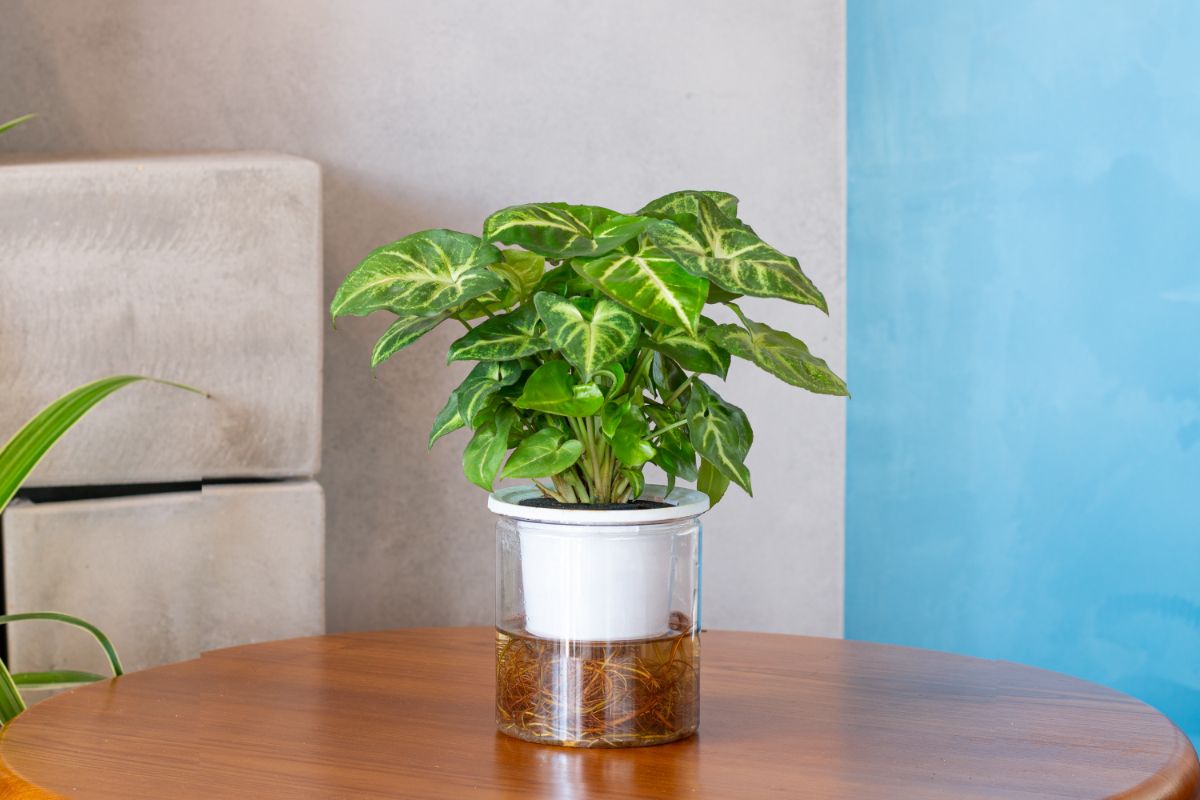
| Plant name: | Arrowhead vine |
| Light requirements: | Bright, indirect light |
| Approximate days to root? | 1 to 2 weeks |
| Toxic to pets? | Yes |
Arrowhead vines grow almost as vigorously as pothos plants, so you know they’ll root well in water. These plants can be grown as tabletop specimens, or they can be trained to grow on short trellises or with mossy poles. When placed in a glass of water, arrowhead vines will root quickly, and you can easily create many more of these plants to add to your shelves!
Arrowhead vines are prized as foliage plants, and they have leaves that come in different colors, including green, pink, and golden brown. These plants can also bloom in summer, but they rarely flower indoors.
19. Velvet plant (Gynura aurantiaca)
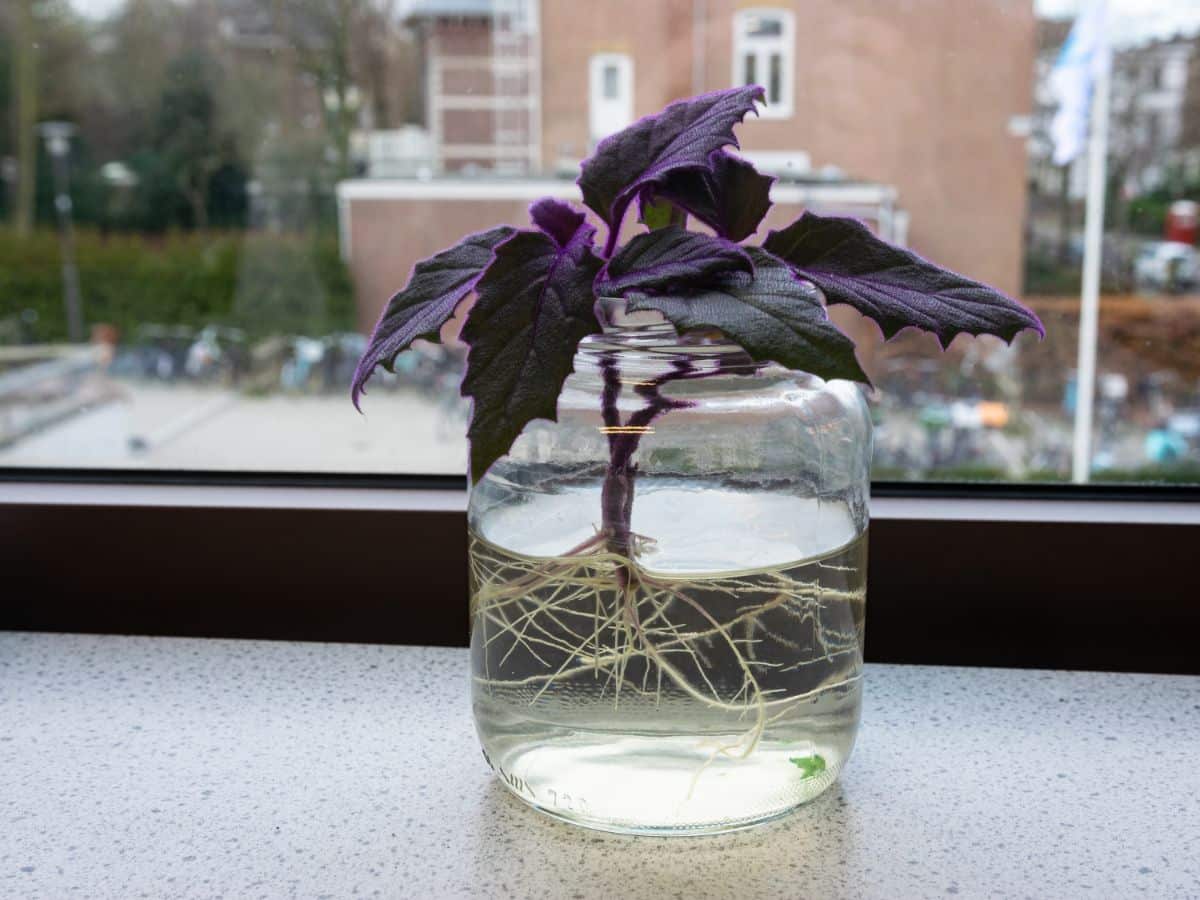
| Plant name: | Velvet plant |
| Light requirements: | Bright to medium light |
| Approximate days to root? | 1 to 3 weeks |
| Toxic to pets? | No |
Also known as the purple passion plant, velvet plants are famed for their distinct leaves that are covered in fuzzy, electric purple hairs. These vining plants also produce golden-orange flowers that look a bit like tiny dandelions, and they look equally alluring in hanging baskets or in tabletop planters.
However, as lovely as velvet plants are, these houseplants are short-lived, and they usually die away after 2 to 3 years. But if you take cuttings of the mother plant and propagate them in water, you can keep velvet plants going for generations!
20. Jade plant (Crassula ovata)
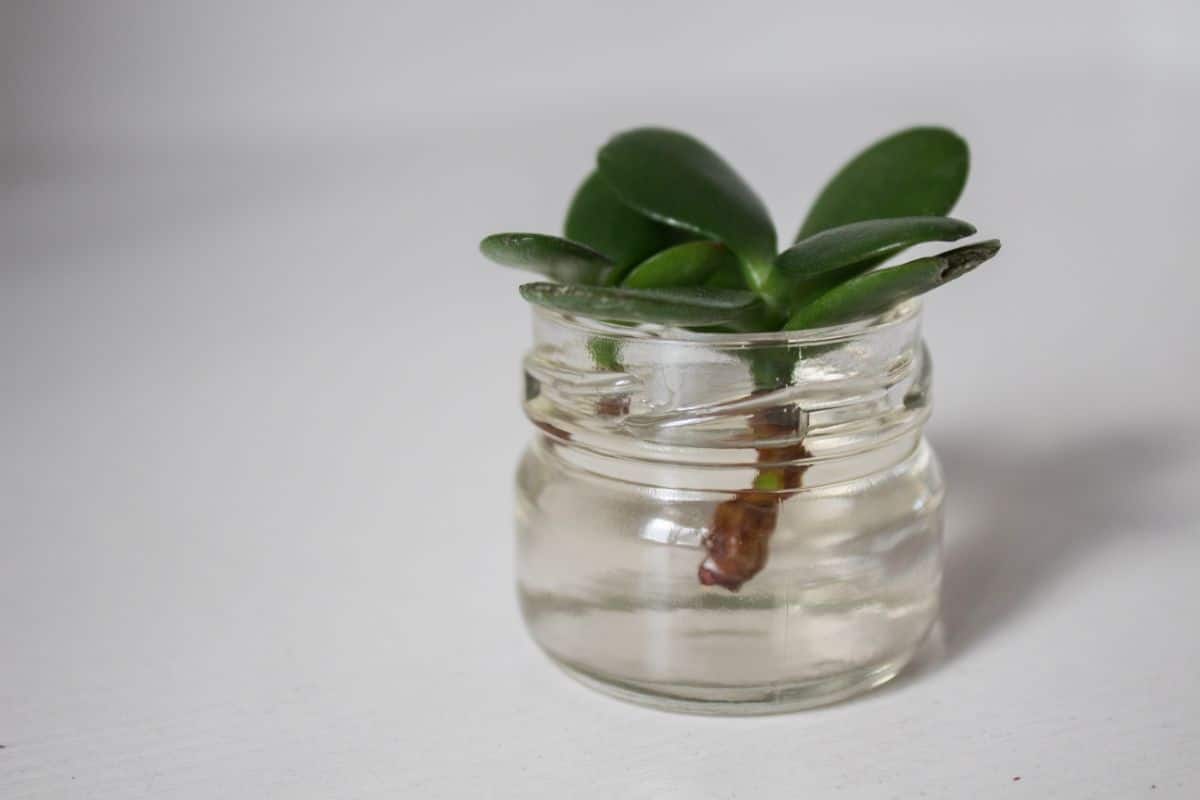
| Plant name: | Jade plant |
| Light requirements: | Bright light |
| Approximate days to root? | 2 to 3 weeks |
| Toxic to pets? | Yes |
Jade plants are popular succulent plants that can grow up to 6’ tall indoors. But these plants can get top-heavy if you overwater them, which will cause the plant to droop or drop stems. If your jade plant looks like it could use pruning to keep it looking trim, or you simply want to make new jade plants for your collection, these succulents also root well in water or soil.
Once jade plants have rooted, they should be potted in a well-draining potting mix intended for succulents. These light-loving plants also thrive in bright light, so remember to place your new cuttings under a grow light or in a sunny window!
Summary
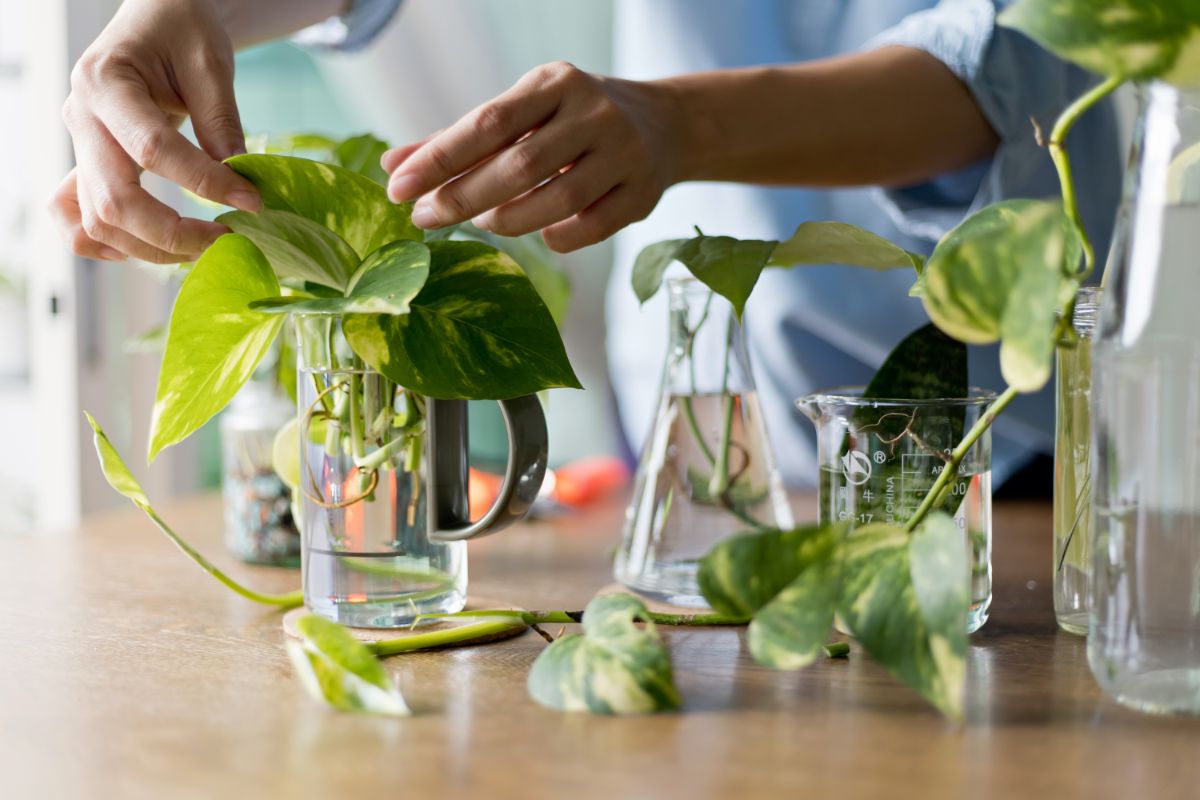
Propagating certain houseplants in water is so incredibly simple it almost feels like magic. Take a few cuttings or prunings from your plants, place them in a small jar of water, and in a few weeks, you’ll have new plants for free! After propagating, you can use your cuttings in your home, share them with friends or give them as a gift.
Most houseplants should be repotted in the soil after they develop roots, but there are some exceptions. If you don’t like growing plants in soil and you’d prefer a hydroponic houseplant garden, checkout out our list of plants that will continue to grow happily in water even when mature!

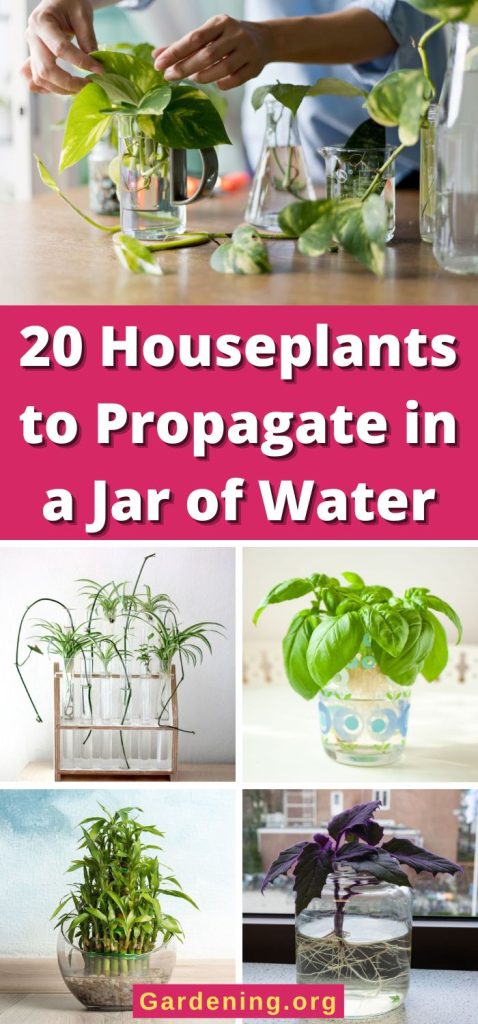
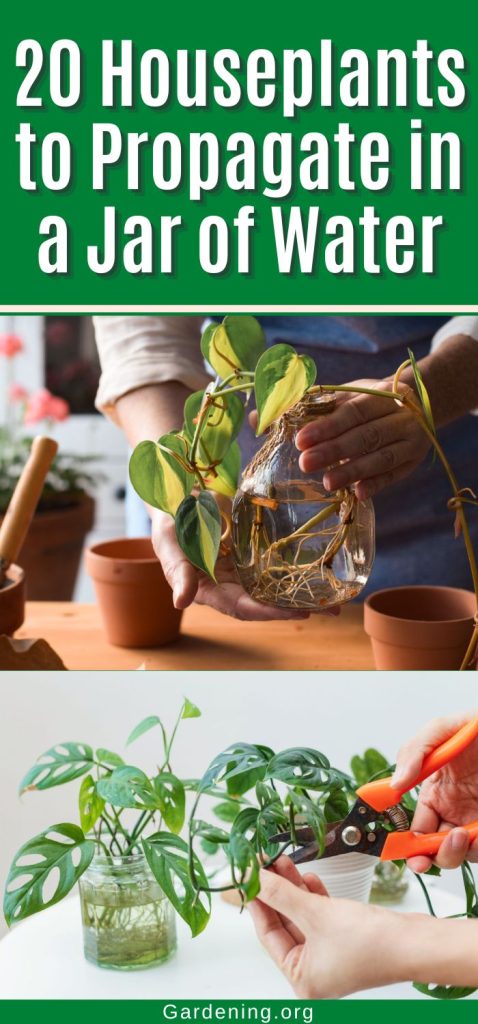

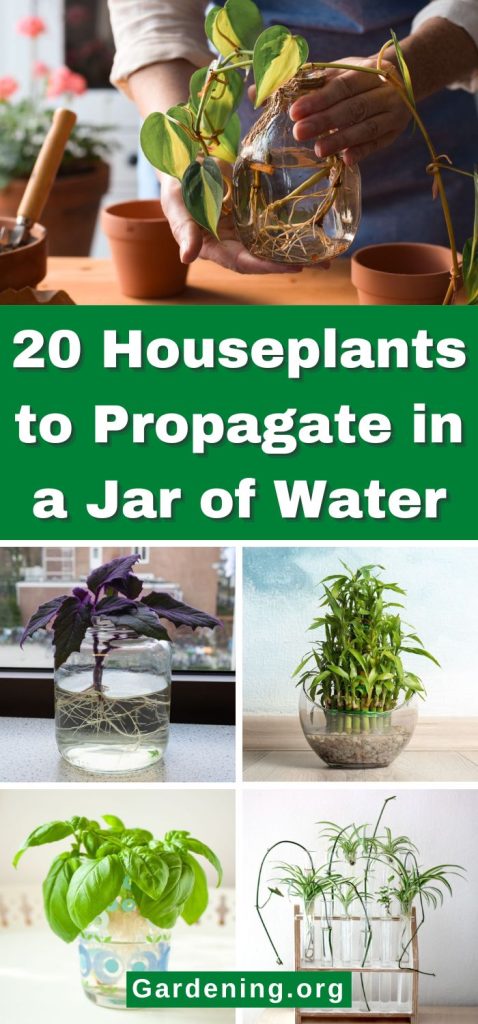
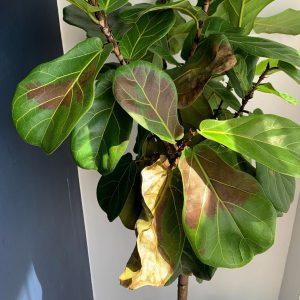
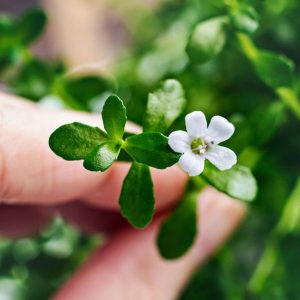
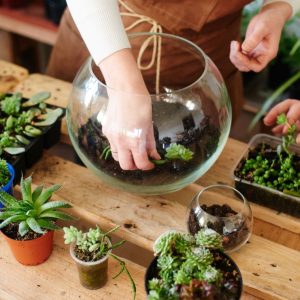

Jg Coleman
Love this. Would love to be able to fill my home with plants but I don’t have a green thumb.
Mary Ward
Give some of these a try! Pothos especially will fill your home and aren't needy plants. Spider plants, too.